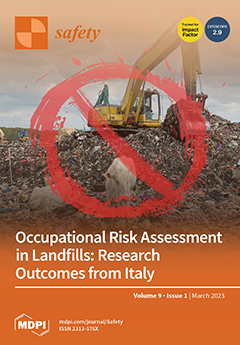Open AccessArticle
SHIELD Human Factors Taxonomy and Database for Learning from Aviation and Maritime Safety Occurrences
by
Sybert Stroeve, Barry Kirwan, Osman Turan, Rafet Emek Kurt, Bas van Doorn, Luca Save, Patrick Jonk, Beatriz Navas de Maya, Andy Kilner, Ronald Verhoeven, Yasser B. A. Farag, Ali Demiral, Béatrice Bettignies-Thiebaux, Louis de Wolff, Vincent de Vries, Sung Il Ahn and Simone Pozzi
Cited by 3 | Viewed by 3081
Abstract
Human factors (HF) in aviation and maritime safety occurrences are not always systematically analysed and reported in a way that makes the extraction of trends and comparisons possible in support of effective safety management and feedback for design. As a way forward, a
[...] Read more.
Human factors (HF) in aviation and maritime safety occurrences are not always systematically analysed and reported in a way that makes the extraction of trends and comparisons possible in support of effective safety management and feedback for design. As a way forward, a taxonomy and data repository were designed for the systematic collection and assessment of human factors in aviation and maritime incidents and accidents, called SHIELD (Safety Human Incident and Error Learning Database). The HF taxonomy uses four layers: The top layer addresses the sharp end where acts of human operators contribute to a safety occurrence; the next layer concerns preconditions that affect human performance; the third layer describes decisions or policies of operations leaders that affect the practices or conditions of operations; and the bottom layer concerns influences from decisions, policies or methods adopted at an organisational level. The paper presents the full details, guidance and examples for the effective use of the HF taxonomy. The taxonomy has been effectively used by maritime and aviation stakeholders, as follows from questionnaire evaluation scores and feedback. It was found to offer an intuitive and well-documented framework to classify HF in safety occurrences.
Full article
►▼
Show Figures





